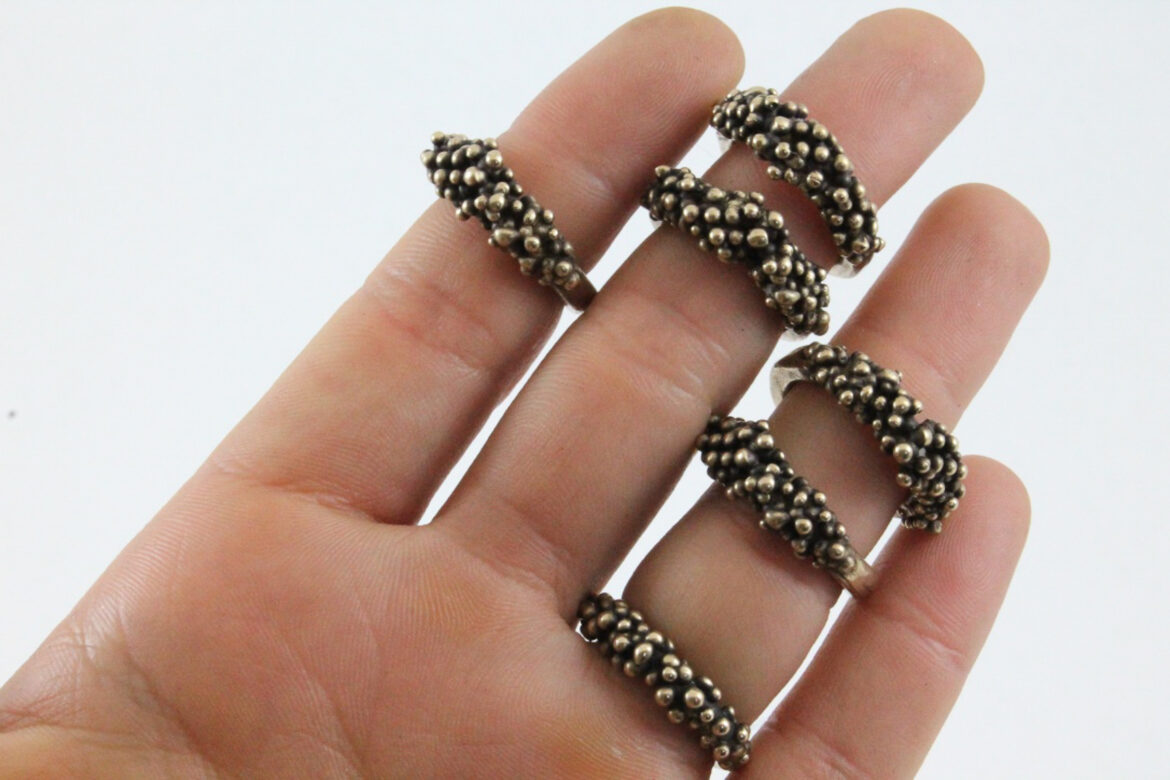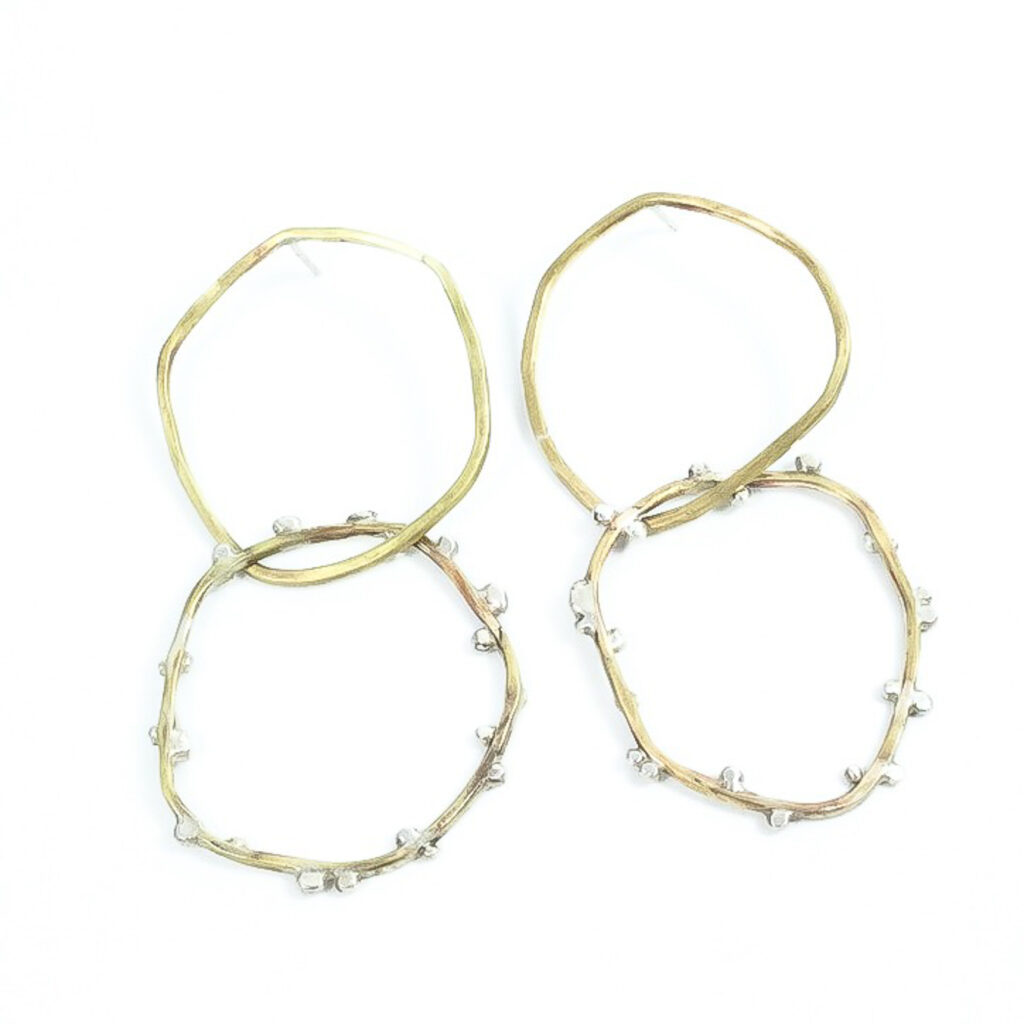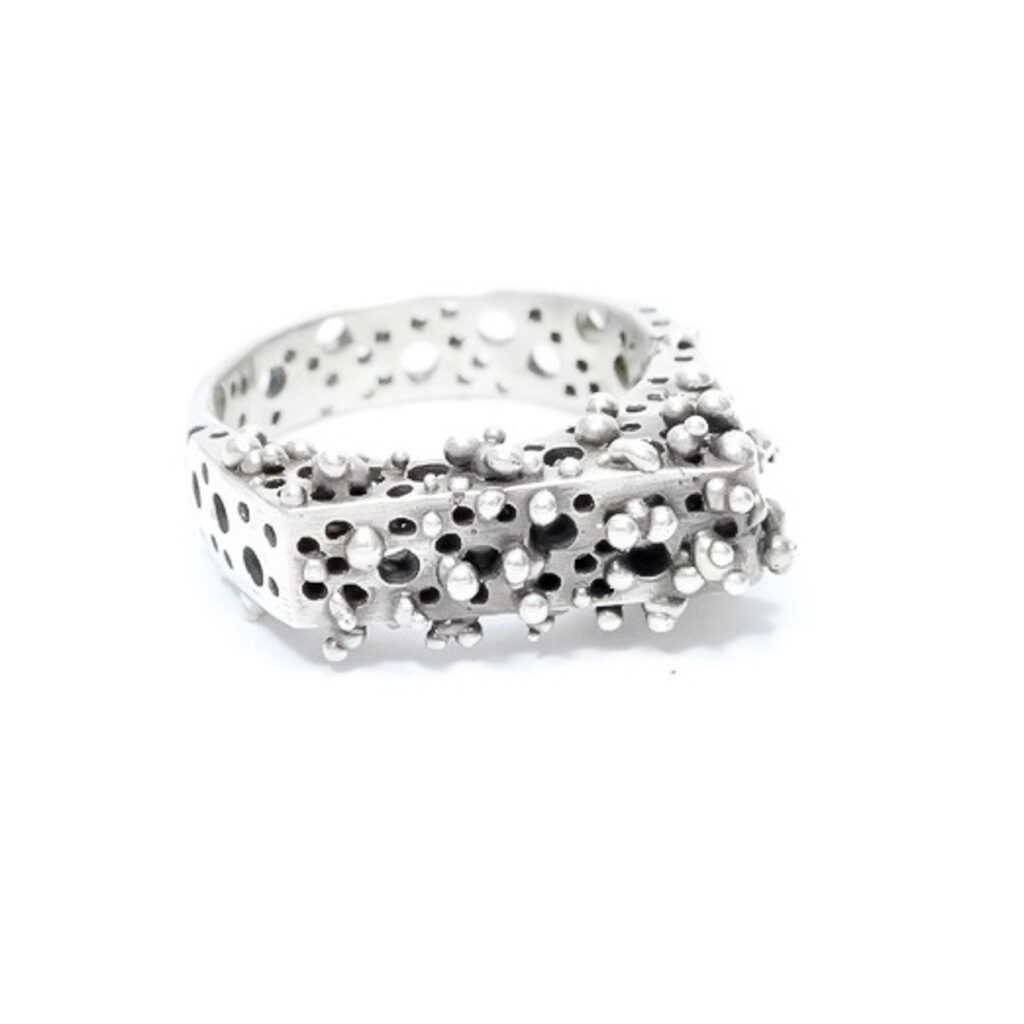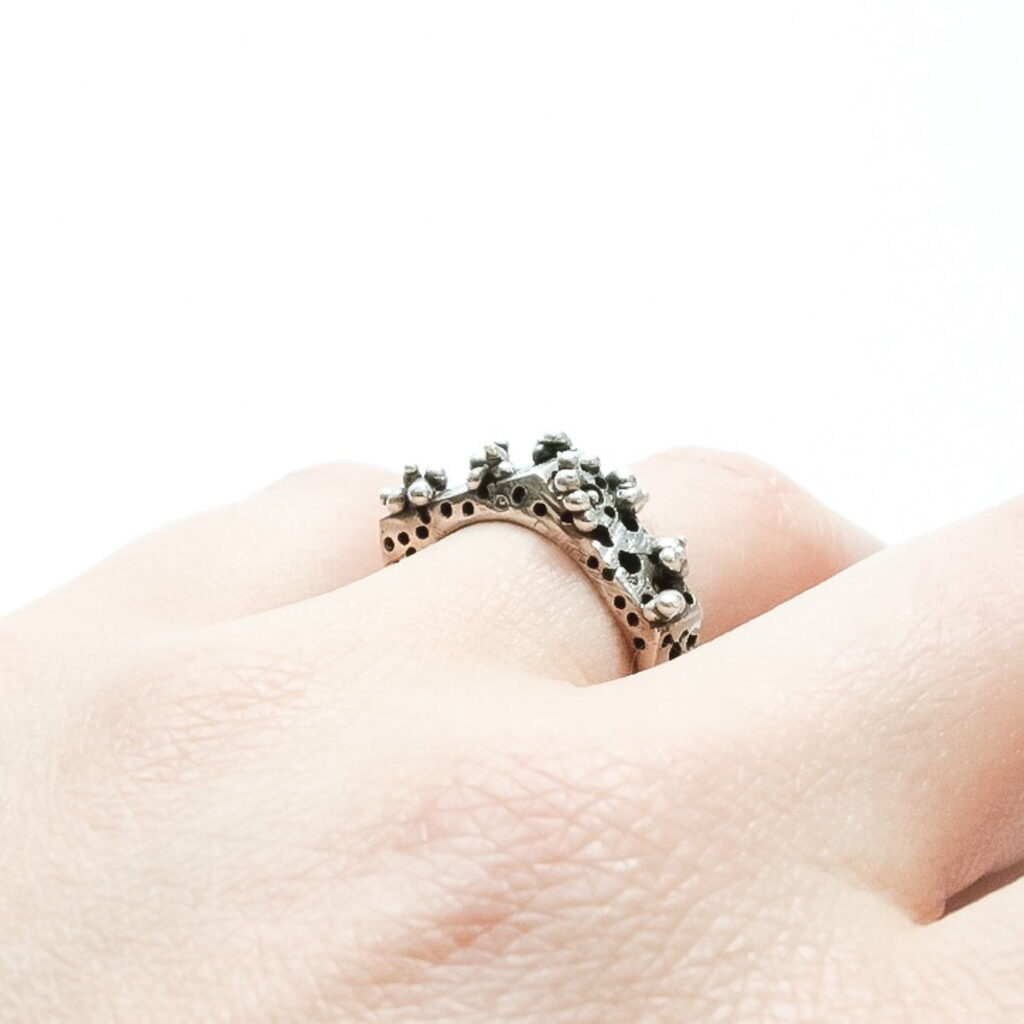Rings from Azita Mireshghi’s “Sublimation” collection. Photo courtesy of Azita Mireshghi.
By Greta Chiocchetti
Azita Mireshghi followed a generations-long family tradition when she followed her dreams of becoming a jewelry designer. However, she didn’t know it until she had already graduated from the School of Jewelry & Metal Arts’ (JEM) M.F.A. program at Academy of Art University,
“It’s in my blood, but I didn’t realize it at first—how far it goes back,” said Mireshghi, owner and designer of Azita Mir Jewelry, on a call from her home studio in Los Angeles.

She explained that her grandfather, his father, and his father before him were all metalsmiths. Her father was the first in generations to break tradition, opting to pursue a career in business instead.
“I always kind of assumed that my creative side was from my mother’s side of the family because her dad was a poet,” said Mireshghi. “My dad never told me that there was this family history of metalsmithing until I had already gone out and done it on my own.”
It makes sense that Mireshghi’s work seems biographical in many ways. While she creates beautiful, wearable art for everyone, she pulls inspiration from her personal story. Recently featured in Voyage LA, a publication that spotlights Los Angeles-based creatives and entrepreneurs, Mireshghi is beginning to reap the rewards from years of hard work.
For Mireshghi, jewelry-making is an opportunity to convey an emotion or sensation. Her series, “Sublimation,” is inspired by her experiences with anxiety, and it explores how certain textures and repetitive actions can ease negative emotions. With a focus on various textures, ranging from metal studs to hammered bronze, her pieces evoke both empowering and soothing feelings she experienced while creating them.
“I’ve always been fascinated with texture, and in order to create these textures, I end up making a lot of repetitive movements, which can actually ease feelings of nervousness,” explained Mireshghi. “When you feel anxious, working with your hands can really help. I’m creating these pieces where you can almost see the anxiety on the piece, but it also has that textural, tactile element to where it could be soothing to the wearer to touch and interact with it.”
She laughingly admitted that before pursuing her Academy education, she tried to make jewelry on her own. A failed attempt in teaching herself soldering led her to seek out proper technical training—as well as conceptual training.
“I found out about the Academy, and I realized, yes, I could go to a trade school and learn the practical skills, but to be able to create art and think about it conceptually. … I needed to be pushed to think critically about art, and that’s definitely what I got in the program.”
Mireshghi, who also works as a business manager in L.A. for “a very large urgent care,” earned undergraduate degrees in global studies and French from U.C. Santa Barbara and worked her way up the corporate ladder. She shared that having a corporate day job has offered her the security to pursue jewelry design on her terms.
“When I came out of grad school, I felt a lot of pressure to succeed financially, and I wasn’t quite sure how I was going to make it work,” said Mireshghi. “Taking some of that pressure off of myself to make [jewelry] my bread and butter really helped get the creative juices flowing again. Having the skills [from the Academy] can—and will—allow you to succeed in other fields.”
Though she found JEM’s M.F.A. program to be a challenging experience—she said the expectations were high and workloads heavy—Mireshghi’s time at the Academy transformed her into the thoughtful artist she is today.
“She always had a clear vision of her core concept: how her works could transform fear and anxiety into courage,” said JEM Director Charlene Modena. “Her journey was to find this expression through materials and images. Since graduating, Azita has developed strong [business development] skills and developed a body of work with a wide range of price points, without losing the powerfully symbolic aspect of her work.”
While Mireshghi experimented with more abstract, high-concept pieces during her time at the Academy, since graduating, she has sought to strike a balance between her concept and wearability.
“I really had to focus on why I got into jewelry in the first place, which is the emotion that you feel when you wear a piece of jewelry, whether it’s feeling badass or powerful or whatever it is,” said Mireshghi. “So for me, it’s about conveying something through the jewelry, but keeping it open enough to where a wide variety of people will be able to connect with it, too.”





